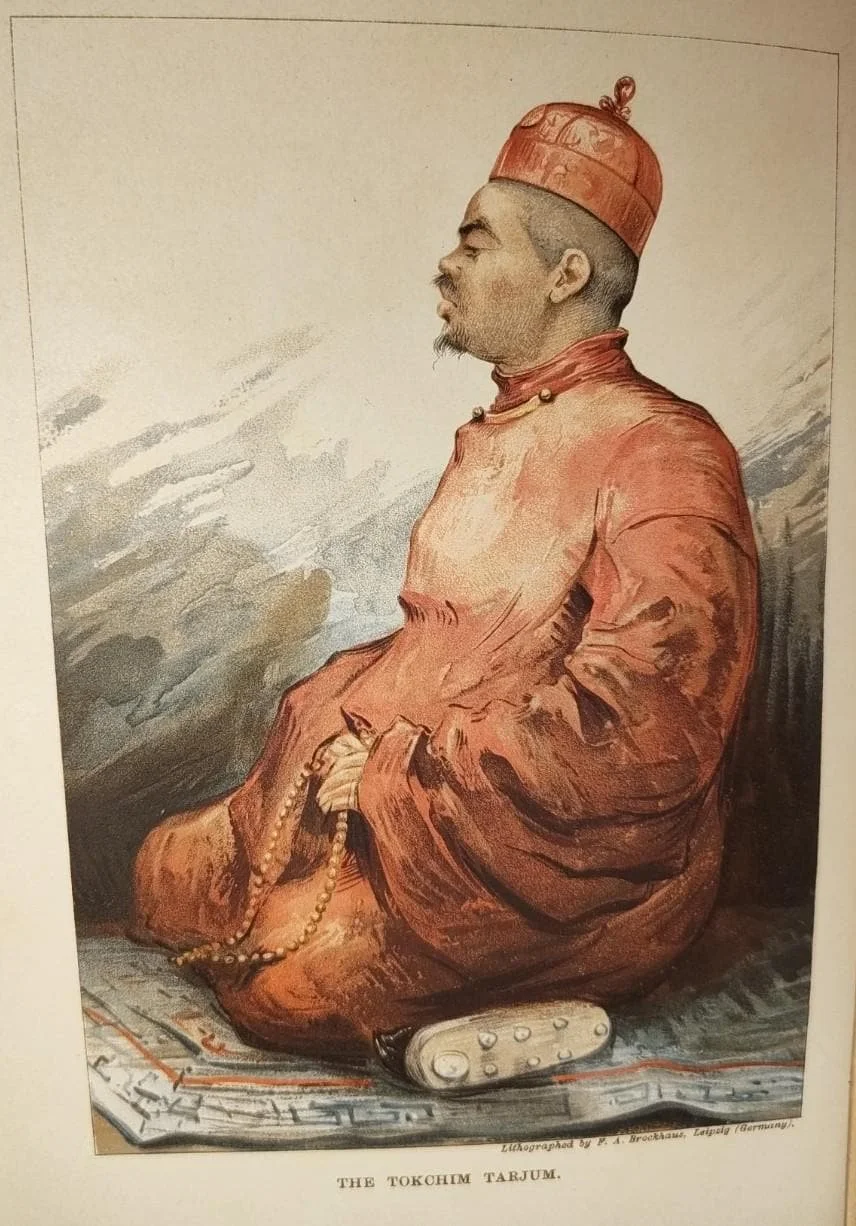 Image 1 of 10
Image 1 of 10

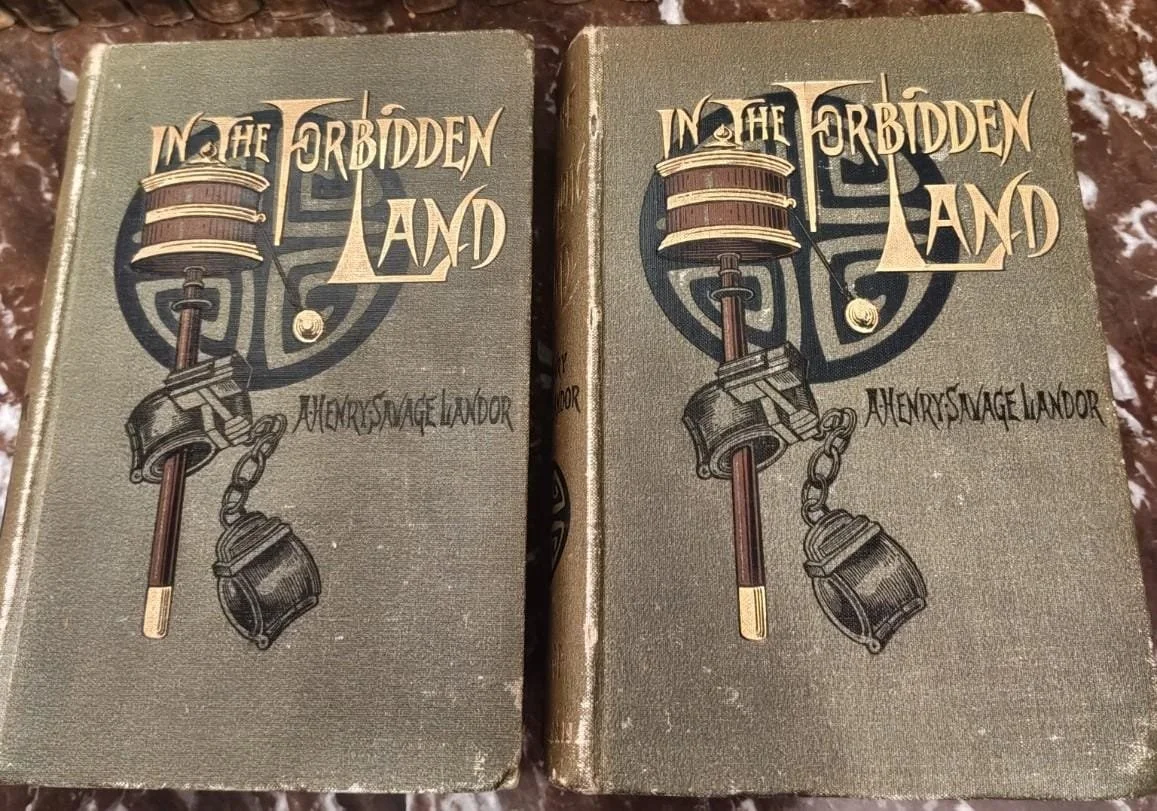 Image 2 of 10
Image 2 of 10

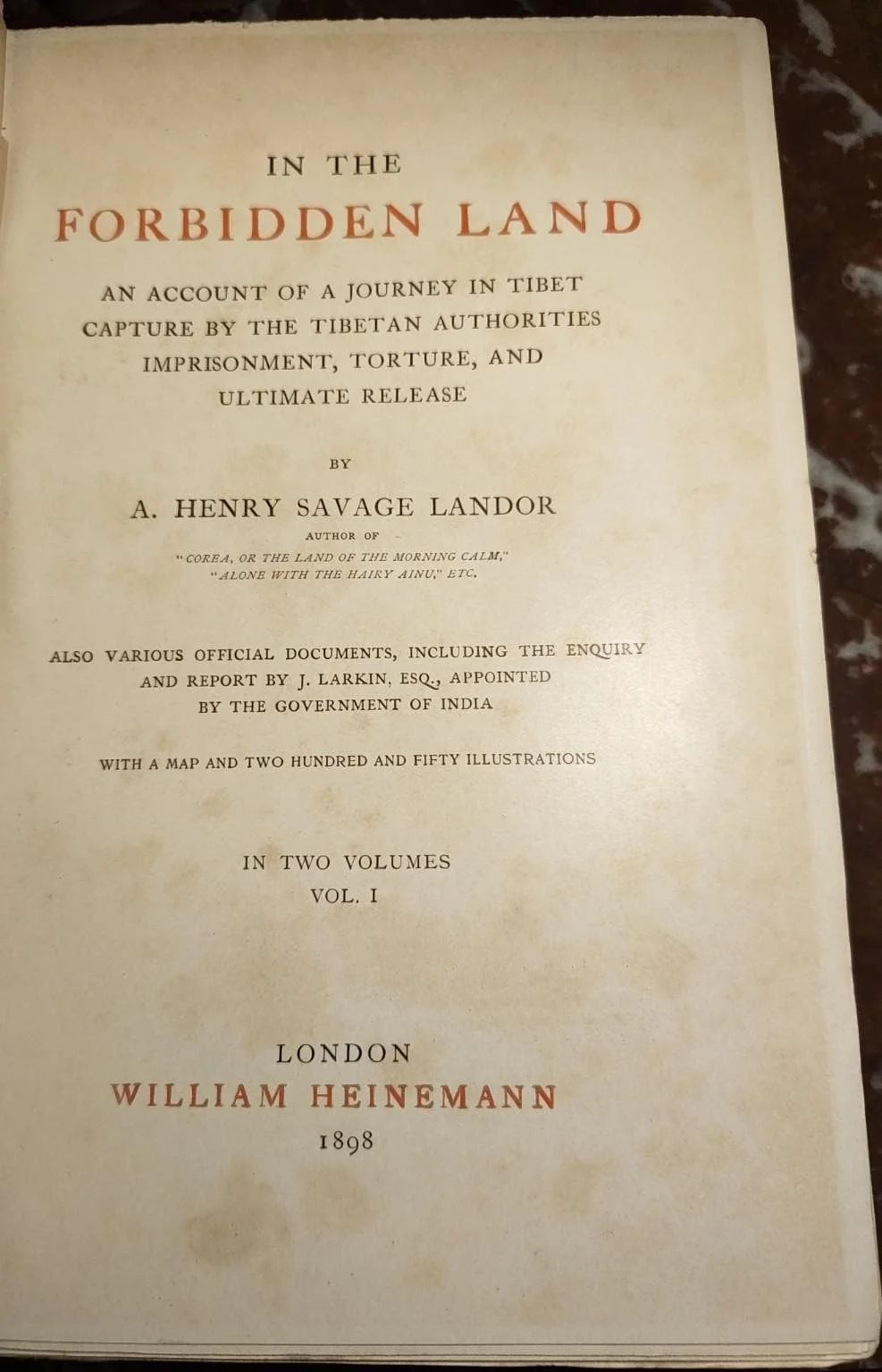 Image 3 of 10
Image 3 of 10

 Image 4 of 10
Image 4 of 10

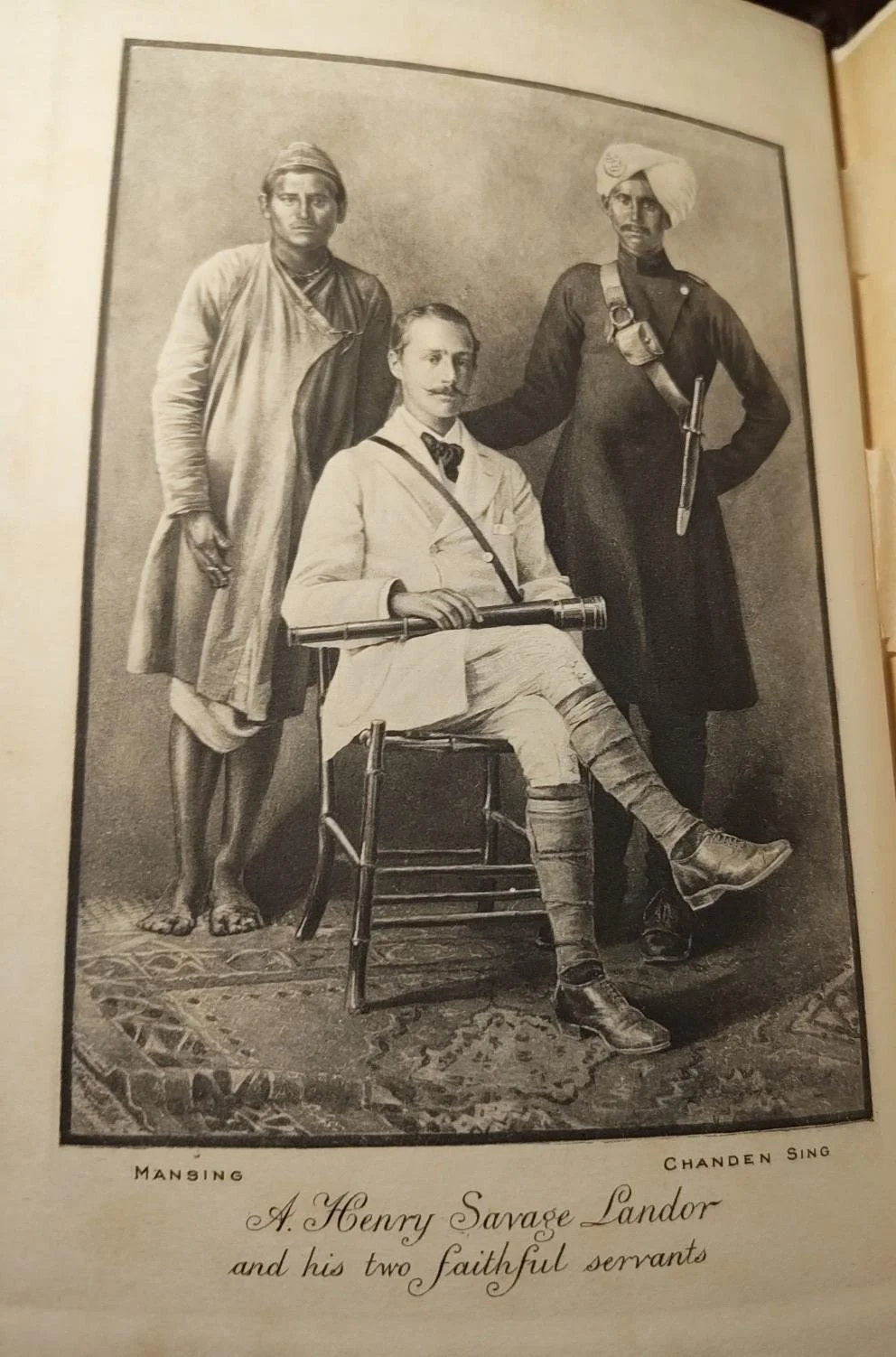 Image 5 of 10
Image 5 of 10

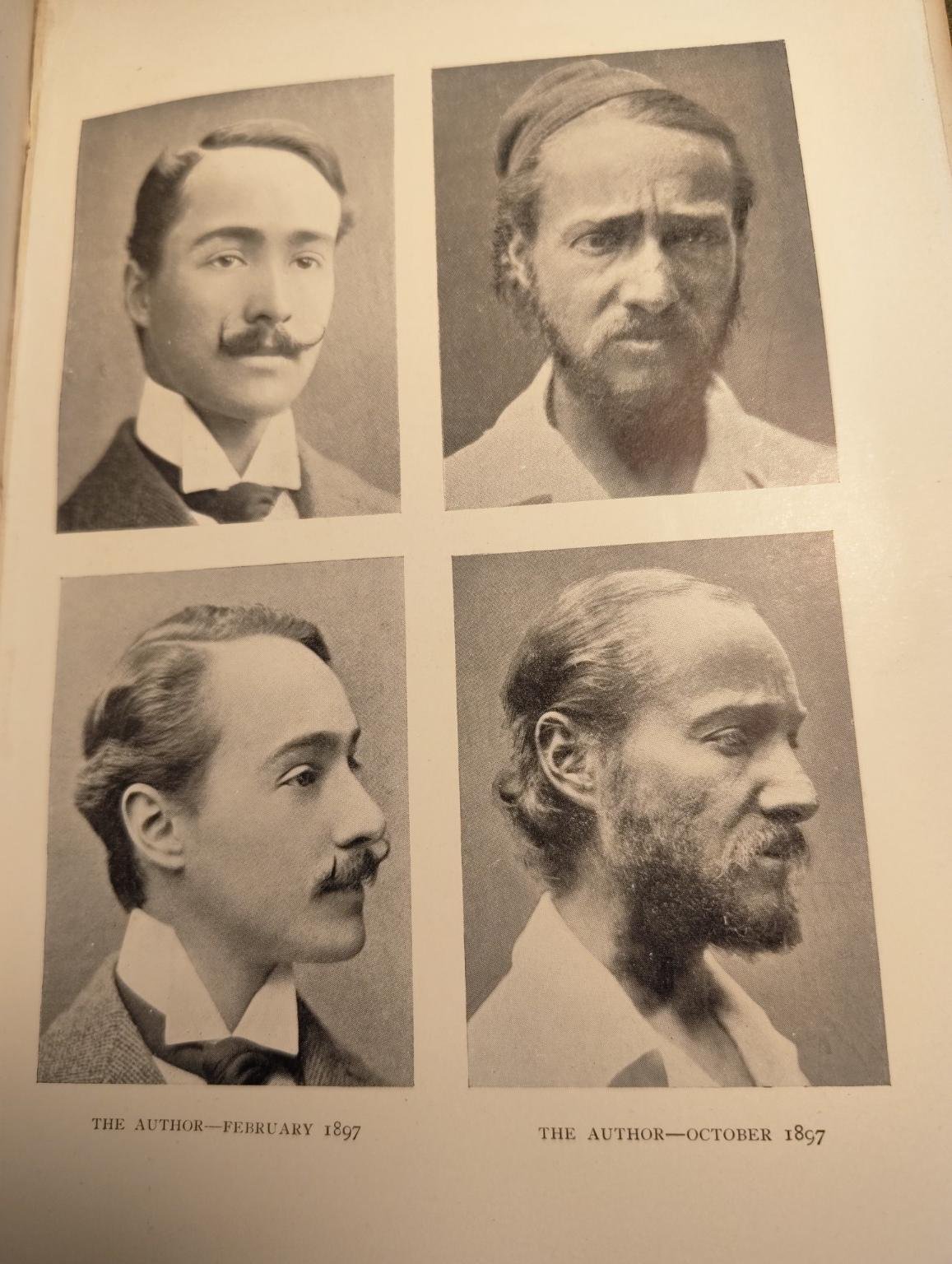 Image 6 of 10
Image 6 of 10

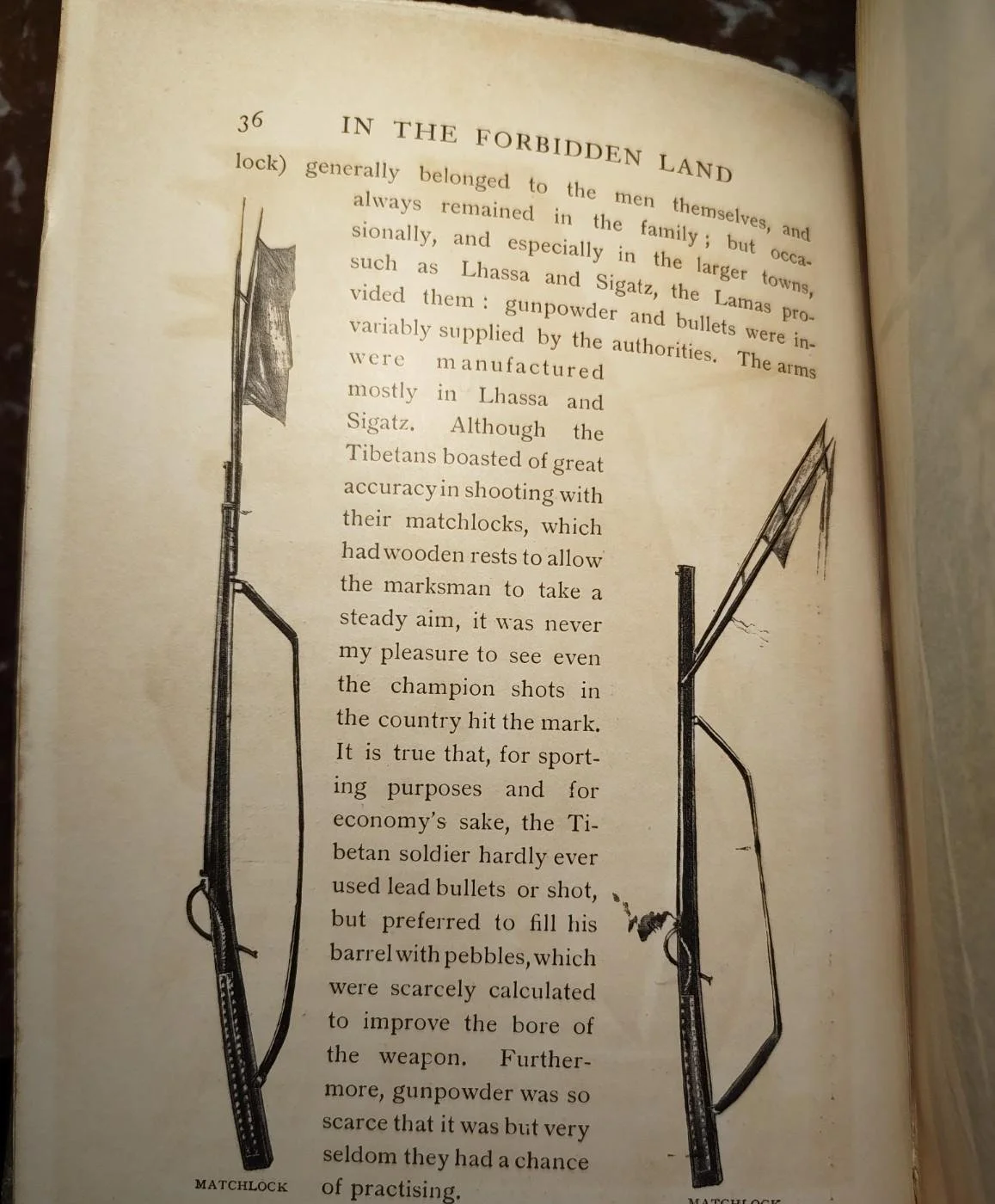 Image 7 of 10
Image 7 of 10

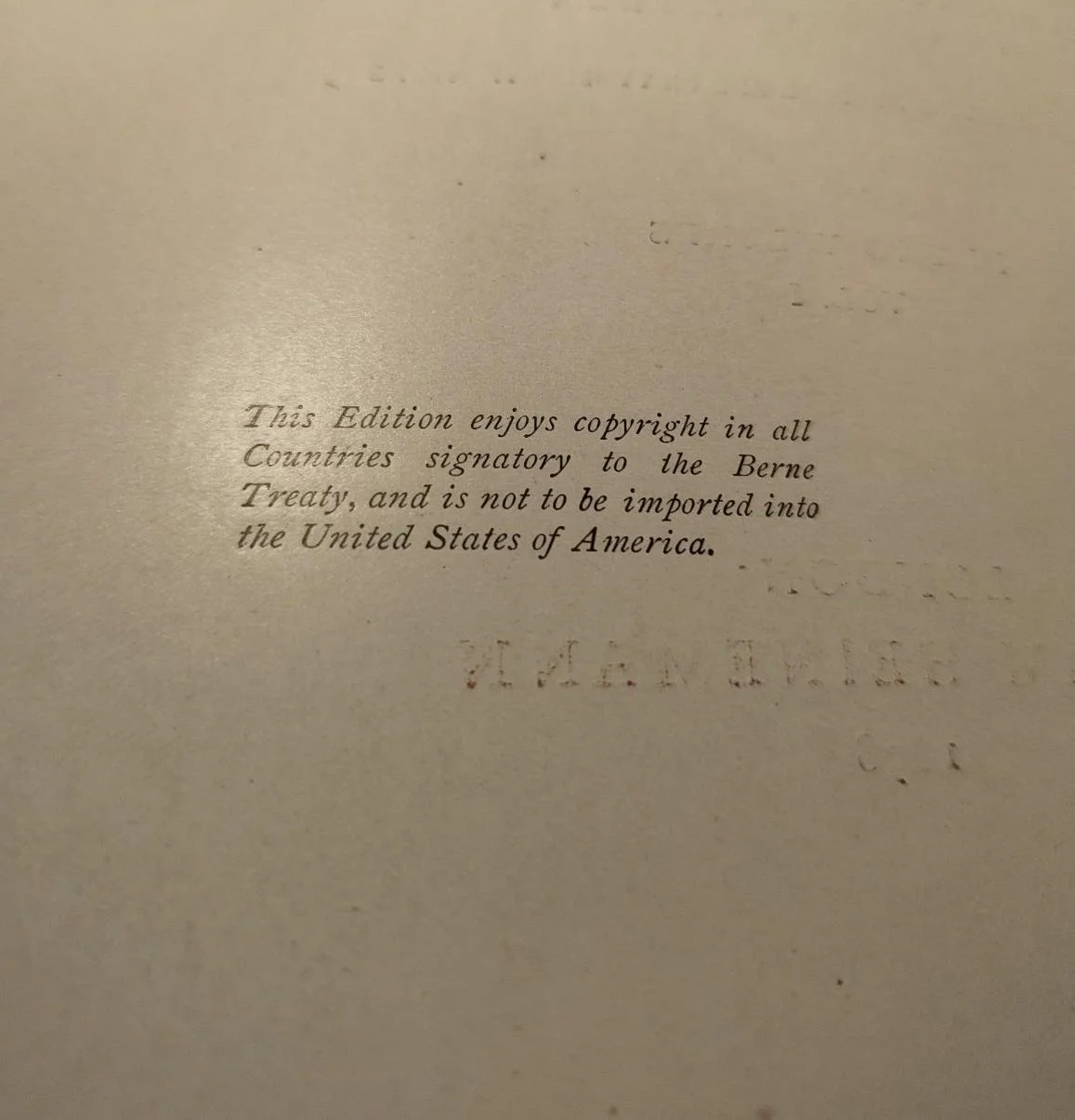 Image 8 of 10
Image 8 of 10

 Image 9 of 10
Image 9 of 10

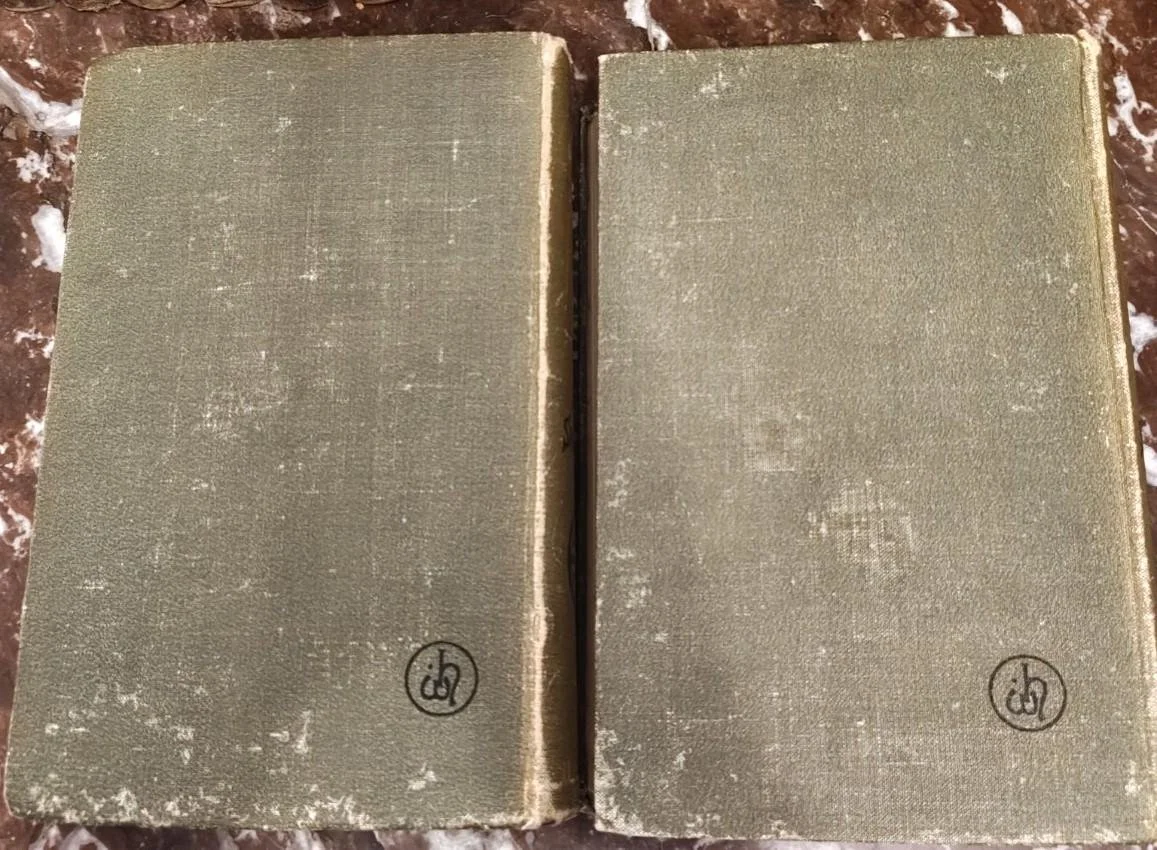 Image 10 of 10
Image 10 of 10











A. Henry Savage Landor. In the Forbidden Land. London 1898. First British Edition in Two Volumes
This distinguished first British edition of In the Forbidden Land captures one of the most dramatic encounters between Victorian exploration and the closed world of Tibet. Published in London in 1898, and produced to an unusually high standard by William Heinemann, it recounts A. Henry Savage Landor’s 1897 attempt to penetrate Tibetan territory at a time when foreign access was strictly prohibited.
An expedition on the limits of the possible
Landor, an explorer, artist, and ethnologist, set out to document a region that few Europeans had glimpsed. His narrative offers an unvarnished account of the hardships he endured, including his capture by Tibetan authorities, episodes of torture, and eventual release. The result is a gripping blend of travel writing, ethnographic description, and survival narrative that shaped Western perceptions of Tibet at the end of the nineteenth century.
Lavish Victorian bookmaking
Heinemann produced the British first edition in an impressively illustrated format, reflecting the era's fascination with discovery and empire. The set includes:
• over 250 illustrations, many taken from the author’s own sketches
• photographic portraits of Landor and his companions
• a large folding map of southwestern Tibet
• decorative olive-green cloth bindings stamped in gilt and black, inspired by Tibetan motifs
The combination of textual detail, artistic documentation, and photographic evidence gives the work both journalistic immediacy and artistic presence.
Condition
The original olive-green cloth bindings remain attractive, with wear to edges and light fading to the spines. The decorative front boards retain strong gilt and black impressions. Light foxing appears on some preliminary leaves. One plate in Volume II (between pages 142 and 143) is loose but present. The folding map and all illustrations are complete. Overall Good to Very Good for a set of this age and format.
Why this edition matters
This is the true British first edition, identifiable by the printed restriction “not for import into the United States”. It stands as one of the last major Victorian travel narratives published before Tibet became all but inaccessible to foreign observers. Its mixture of visual documentation and first-hand testimony has ensured its continued relevance to historians of exploration, anthropology, and cross-cultural encounter.
For collectors of Asian travel literature, Victorian illustrated books, or accounts of early Western contact with Tibet, this set offers both historical gravity and strong visual appeal.
This distinguished first British edition of In the Forbidden Land captures one of the most dramatic encounters between Victorian exploration and the closed world of Tibet. Published in London in 1898, and produced to an unusually high standard by William Heinemann, it recounts A. Henry Savage Landor’s 1897 attempt to penetrate Tibetan territory at a time when foreign access was strictly prohibited.
An expedition on the limits of the possible
Landor, an explorer, artist, and ethnologist, set out to document a region that few Europeans had glimpsed. His narrative offers an unvarnished account of the hardships he endured, including his capture by Tibetan authorities, episodes of torture, and eventual release. The result is a gripping blend of travel writing, ethnographic description, and survival narrative that shaped Western perceptions of Tibet at the end of the nineteenth century.
Lavish Victorian bookmaking
Heinemann produced the British first edition in an impressively illustrated format, reflecting the era's fascination with discovery and empire. The set includes:
• over 250 illustrations, many taken from the author’s own sketches
• photographic portraits of Landor and his companions
• a large folding map of southwestern Tibet
• decorative olive-green cloth bindings stamped in gilt and black, inspired by Tibetan motifs
The combination of textual detail, artistic documentation, and photographic evidence gives the work both journalistic immediacy and artistic presence.
Condition
The original olive-green cloth bindings remain attractive, with wear to edges and light fading to the spines. The decorative front boards retain strong gilt and black impressions. Light foxing appears on some preliminary leaves. One plate in Volume II (between pages 142 and 143) is loose but present. The folding map and all illustrations are complete. Overall Good to Very Good for a set of this age and format.
Why this edition matters
This is the true British first edition, identifiable by the printed restriction “not for import into the United States”. It stands as one of the last major Victorian travel narratives published before Tibet became all but inaccessible to foreign observers. Its mixture of visual documentation and first-hand testimony has ensured its continued relevance to historians of exploration, anthropology, and cross-cultural encounter.
For collectors of Asian travel literature, Victorian illustrated books, or accounts of early Western contact with Tibet, this set offers both historical gravity and strong visual appeal.

